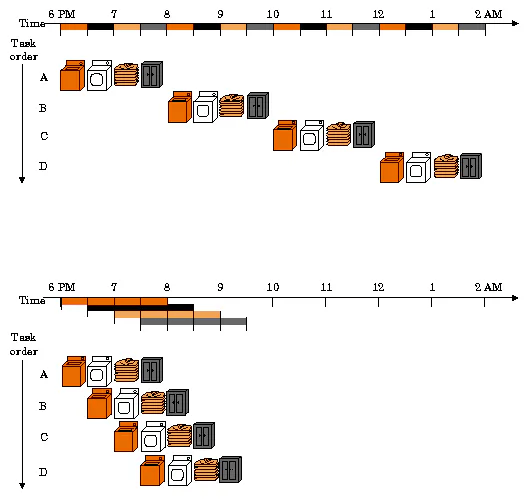The Monad blockchain represents a significant evolution in blockchain technology, particularly in addressing the inefficiencies and limitations inherent in many existing networks. As a Layer 1 blockchain, Monad has been meticulously designed to optimize transaction throughput, scalability, and compatibility with existing Ethereum infrastructure, while introducing innovations that set it apart from other blockchain platforms.
What is Monad?
Monad is a revolutionary Layer-1 blockchain designed for speed and interconnectivity. It is EVM-compatible and emphasizes pipelining to achieve impressive feats like 10,000 transactions per second, one-second block times, and single-slot finality. Monad combines advanced technologies like MonadBFT, Deferred Execution, Parallel Execution, and MonadDB. This makes Monad a familiar yet exciting Layer-1 blockchain. Developers can use their existing Ethereum knowledge and tools to build on Monad, while users benefit from faster transaction processing times and potentially lower fees
Discover more about: What is Monad?
Monad Technical Architecture
- High Transaction Throughput
Monad can process up to 10,000 transactions per second (TPS), significantly outperforming most existing blockchains. This high throughput is crucial for applications requiring rapid transaction processing.
- Parallel Execution:
Monad employs parallel execution, allowing multiple transactions to be processed simultaneously. This enhances network efficiency and reduces latency compared to traditional sequential processing methods.
- Instant Finality:
Monad’s pipelined consensus mechanism, MonadBFT, ensures instant block finality, leading to faster and more reliable transaction settlements.
- Ethereum Compatibility:
Monad is fully compatible with Ethereum’s Virtual Machine (EVM), enabling Ethereum developers to easily port their applications to Monad and utilize familiar Ethereum interfaces and tools.
- Optimized for Scalability:
With its advanced parallel execution and superscalar pipelined consensus architecture, Monad is specifically designed to overcome scalability issues, supporting a growing number of transactions and users.
- Lower Operational Costs:
Monad’s efficiency results in significantly lower transaction fees compared to most blockchain systems, making the network cost-effective and user-friendly for both developers and users.
How Monad Addresses Ethereum’s Performance Challenges
Ethereum faces several performance limitations, including:
- Inadequate Storage Access Patterns: Inefficient methods for accessing and managing storage.
- Single-Threaded Execution: The current system processes transactions sequentially rather than in parallel.
- Limited Execution Budget: Execution is constrained by the need to fit within a fixed gas limit, impacting consensus and overall performance.
- State Growth Issues: Increasing state size affects future access costs and overall efficiency.
Monad addresses these challenges with several innovative solutions designed to enhance Ethereum’s performance and scalability:
1. MonadBFT for Consensus Efficiency
Monad employs MonadBFT, a pipelined consensus mechanism that improves transaction finality and overall network efficiency by optimizing the consensus process.
2. Deferred Execution
Monad introduces deferred execution, allowing transactions to be processed more efficiently by separating the execution phase from the consensus phase. This reduces the execution load during consensus and optimizes resource utilization.
3. Parallel Execution
With its parallel execution architecture, Monad processes multiple transactions simultaneously. This contrasts with Ethereum’s single-threaded model, significantly enhancing transaction throughput and reducing latency.
4. MonadDb for Optimized Storage
MonadDb improves storage access patterns by implementing advanced data management techniques, addressing issues related to state growth and future state access costs.
5. Full Ethereum Compatibility
Monad ensures seamless integration with Ethereum’s ecosystem by providing:
- Application Compatibility: Full support for applications built on Ethereum, allowing easy migration and interoperability.
- Developer Tooling: Compatibility with popular Ethereum developer tools such as Hardhat, Apeworx, and Foundry.
- Wallet Integration: Cross-system functionality with various Ethereum wallet types, including MetaMask.
- Analytics and Indexing: Integration with analytics and indexing tools like Etherscan and Dune Analytics.
By addressing these key areas, Monad not only enhances performance but also ensures a smooth transition for Ethereum developers and users, leveraging familiar tools and environments while overcoming existing bottlenecks.

Conclusion
Monad’s technical architecture represents a significant leap forward in blockchain technology, offering a solution to many of the challenges faced by existing networks. Through innovations in parallel execution, pipelined consensus, and full Ethereum compatibility, Monad provides a scalable, efficient, and developer-friendly platform that is well-positioned to support the next generation of decentralized applications.
About OriginStake
Originstake is your professional and trusted validator that assists you in your staking activities. We provide full support services, a reward management dashboard, rewards sharing, and much more!
With Originstake, staking is safe, profitable, and extremely cost-effective!





